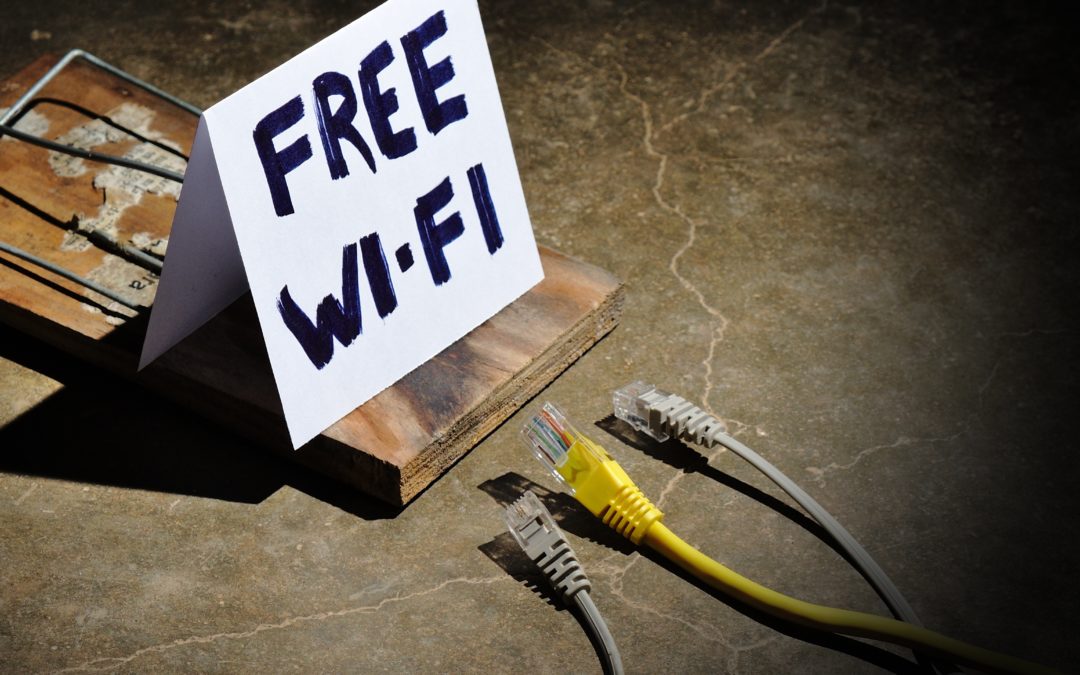Remember when public spots with free internet were few and far between? Thankfully for us (and our data plans!) there is now free WiFi almost everywhere we go, and I’d venture to say most of us take advantage of it whenever we can. But at what cost?
Jumping on WiFi while enjoying a cappuccino at your local coffee shop or delayed on a layover has certainly opened the digital doors of the web for us. However convenient, using a public network unfortunately can expose your data to harmful outside parties. Free public WiFi is a hacker’s playground when it comes to stealing personal information. But don’t panic just yet– this post is not telling you to never use public WiFi again (phew!).
Although completely eliminating risk is impossible, there are certainly steps you can take to avoid being an easy target for these hackers. Follow these 5 tips next time you’re out and about:
1) Use a VPN
The most secure way to publicly surf is through a Virtual Private Network, or a VPN. A VPN creates your own personal protection layer by encrypting data before it even passes through a network– whether that be your home internet provider or the local coffee shop WiFi. The encrypted data then goes to the the VPN, and from the VPN server to your online destination. In turn, the online destination sees your data as coming from the VPN server, not your computer. Think of it as a third party connecting to the internet on your behalf. For more information on VPNs and how to choose the best one for you, check out this VPN Beginner’s Guide.
2) Look For the Green Lock
Ever notice that green lock paired with the word “Secure” at the top left of your browser? It’s probably there right now. That means you’re using an encrypted (or protected) connection. Though your browser probably displays that reassuring green lock, the Chrome extension “HTTPS Everywhere”. HTTPS Everywhere automatically switches thousands of sites from insecure (HTTP) to secure (HTTPS), protecting your data from surveillance and account hijacking.
3) Turn WiFi Off When Not in Use
It’s the simplest preventative measure of them all. When you’re done working or surfing, get into the habit of disabling WiFi on any connected device you own. It’ll cut down on the time you’re connected to a public – and potentially unsafe – network.
4) Avoid Websites Containing Your Sensitive Information
Alright, this is nearly impossible, but it’s worth a try. Avoid browsing websites that have your personal information stored, like your credit card or important passwords. You’re likely going to browse social media, but try to avoid checking your bank account balance while you’re at the coffee shop or the airport.
5) Don’t Forget About All of Your Devices
If you’re traveling with a smartphone, tablet, and laptop, you’ll need to keep all of these tips in mind for each device. Devices can be easily overlooked when you have many, especially if it’s something as second nature as jumping on WiFi quickly from your phone. You can never be too safe!
The fact of the matter is, WiFi is a modern convenience that enhances our technological experiences and gives us the power to connect with the world, wherever we may be. “With great power comes great responsibility” as the old phrase goes. That being said, be mindful and aware next time you jump on WiFi. Doing so can lessen your chances of becoming a cybercrime target next time you’re out enjoying a cappuccino or delayed on a layover.

